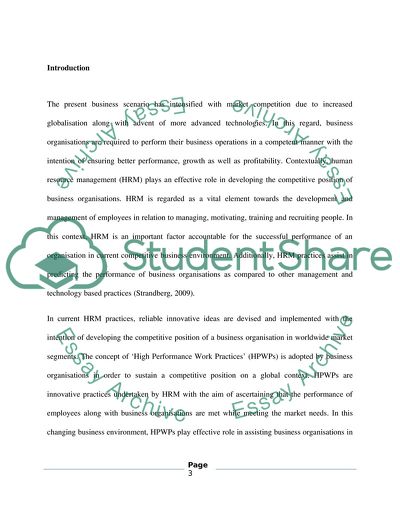Cite this document
(1) High Performance Work Practices lead to the intensification of Essay, n.d.)
1) High Performance Work Practices lead to the intensification of Essay. https://studentshare.org/human-resources/1807188-1-high-performance-work-practices-lead-to-the-intensification-of-work-critically-evaluate-this-statement
1) High Performance Work Practices lead to the intensification of Essay. https://studentshare.org/human-resources/1807188-1-high-performance-work-practices-lead-to-the-intensification-of-work-critically-evaluate-this-statement
(1) High Performance Work Practices Lead to the Intensification of Essay)
1) High Performance Work Practices Lead to the Intensification of Essay. https://studentshare.org/human-resources/1807188-1-high-performance-work-practices-lead-to-the-intensification-of-work-critically-evaluate-this-statement.
1) High Performance Work Practices Lead to the Intensification of Essay. https://studentshare.org/human-resources/1807188-1-high-performance-work-practices-lead-to-the-intensification-of-work-critically-evaluate-this-statement.
“1) High Performance Work Practices Lead to the Intensification of Essay”. https://studentshare.org/human-resources/1807188-1-high-performance-work-practices-lead-to-the-intensification-of-work-critically-evaluate-this-statement.


